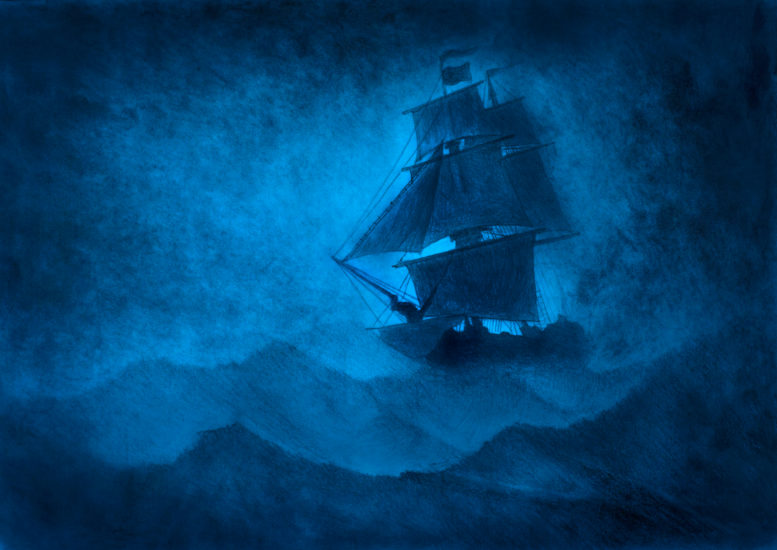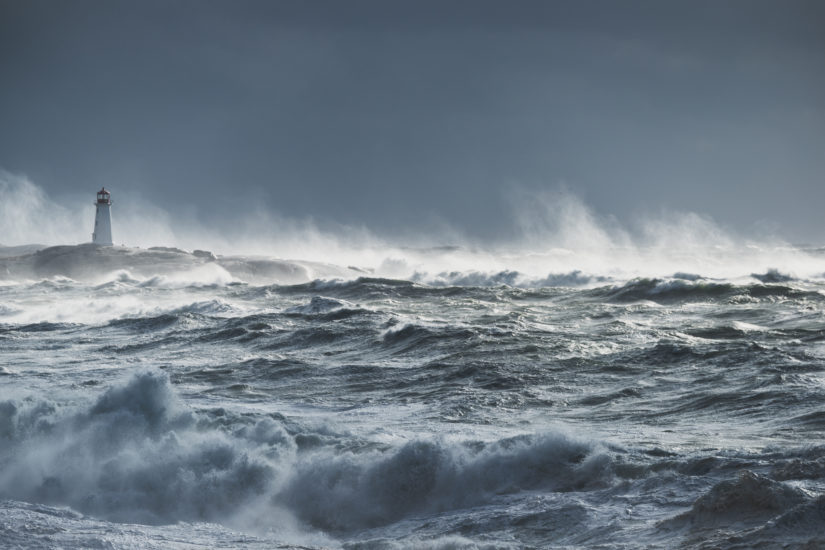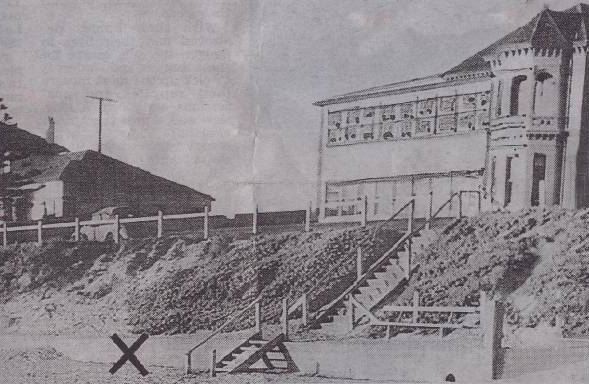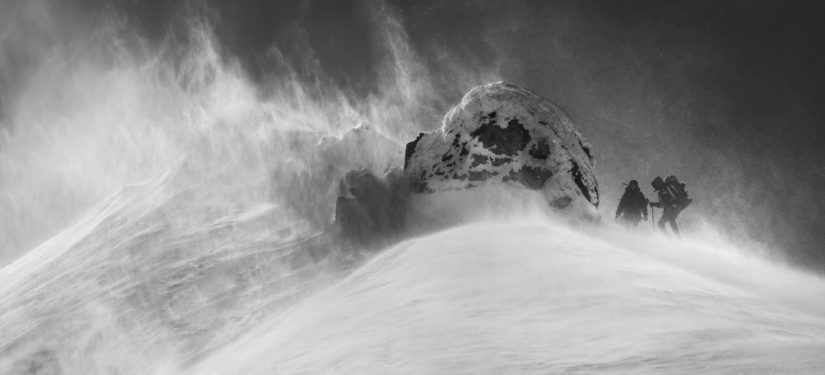It’s A Mystery: Iain’s Top 4 Real-life Mindbogglers

I’m a sucker for a good mystery.
Not only do I spend a lot of time watching documentaries about oft-investigated historical enigmas, or listening to podcasts about unsolved criminal cases, I like a good mystery at the heart of my fiction, too.
But the strange thing is, I don’t necessarily want to see them solved!
Somehow that would take away some of the interest for me. Better to let the imagination run wild, I say! There have been some great books based on history’s most confounding moments; examples of authors using a real-life event as a jumping-off point to tell a fascinating story.
Rather like the “Friend” Fiction team’s Story Starters . . .
With that in mind, here are my top five favourite mysteries from the history books:

Shutterstock.
The Mary Celeste
It’s an obvious one to start with, and one which we’re probably all familiar.
In 1872, sailors found the American merchant ship the Mary Celeste abandoned, adrift in the Atlantic Ocean. Although the lifeboat was missing, the ship was still in a seaworthy condition.
The last entry in the logbook was dated ten days before her discovery. The captain and crew’s personal belongings were seemingly undisturbed onboard.
Experts and enthusiastic amateurs alike have advanced possible explanations over the years. These range from the incredible (giant squid attack or haunting) to the plausible (piracy or mutiny), to the simply intriguing (abandonment following fears of an explosion in the hold).
No one has ever found a trace of the crew.

iStock.
The Flannan Isles lighthouse mystery
This one wasn’t really a mystery, even in 1900 when it happened. But the events, and the story, soon took on a life of their own. And a very plausible explanation was, appropriately, lost at sea.
In 1900, a passing ship noted no light from the lighthouse on Eilean Mòr in the Outer Hebrides. Soon, a relief lighthouse keeper sailed out to investigate why.
When he arrived on the island, the crew had vanished. The light had been allowed to go out, and there was significant damage to the west landing, indicating a storm.
He telegraphed the following back to the Northern Lighthouse Board:
A dreadful accident has happened at the Flannans. The three keepers, Ducat, Marshall and the Occasional have disappeared from the Island… The clocks were stopped and other signs indicated that the accident must have happened about a week ago. Poor fellows they must have been blown over the cliffs or drowned trying to secure a crane.
But this story couldn’t stand up in the face of local rumour.
The three keepers, it was said, had arranged for a ship to take them away to start new lives. Or perhaps foreign spies had abducted them. Or a giant seabird carried them away(!)
Over the years a number of books and films have taken their inspiration from this mystery, including 2019’s “The Vanishing”, which suggests (among other things) that poisoning from the mercury used in the light had driven one of the keepers mad.
There’s something distinctly eerie about people trapped in such an isolated location, disappearing without a trace . . .

Where police discovered the Somerton Man. By Australian police. File originally uploaded on English Wikipedia in November 30, 2008 by Bletchley – http://www.sapolicehistory.org/Oct07.html, Public Domain, https://commons.wikimedia.org/w/index.php?curid=10949997
The Somerton Man
In 1948, police found an unidentified man dead on Somerton Park beach, near Adelaide in Australia.
Neither the police nor the coroner were able to discern his identity (he carried no wallet or identification, and there was no matching dental records on file in the local area).
During autopsy, the coroner detected signs of poisoning. He believed the man committed suicide.
Here’s where the story gets a little strange . . .
In a fob pocket in his trousers, police found a scrap of paper with the Persian phrase tamám shud printed on it. The scrap came from the final page of a book of poems called “Rubáiyát of Omar Khayyám“.
Tamám shud translates as “ended” or “finished”.
Police found the copy of the “Rubáiyát” the scrap had been torn from in the back of an nearby parked car. Inside the book, someone had written a local phone number and what appeared to be a coded message. To date, no one has decoded it.
The number led police to a nurse named Jo Thomson, who lived less than 400 metres from the beach. She denied knowing the man.
Not only did the police investigating at the time believe Ms Thomson was lying, an author who interviewed her many years later also described her as “evasive” on the subject, and he own daughter has stated that her mother knew more than she revealed.
Theories as to the man’s identity range from his being Ms Thomson’s scorned lover, to his being a spy who was murdered for his undercover work. But to this day, no one has been able to conclusively identify the man; decode his inscription in the “Rubáiyát”; discover his connection to Ms Thomson; or identify the poison used to kill him.

Shutterstock.
The Dyatlov Pass Incident
In 1959, Soviet authorities found the bodies of a group of missing hikers high in the Ural Mountains.
Some were only in their underwear, and without boots. It appeared that some had died of asphyxiation, while others had suffered traumatic physical injuries.
These injuries, alongside signs that the group cut their way free of their tents, were all signs that the group had been caught in an avalanche.
Only there were no other obvious signs of an avalanche in the surrounding area.
And one of the hikers was missing her eyes, and her tongue.
The Dyatlov Pass case has fascinated mystery hunters for more than fifty years. Theories as to what happened have included murder at the hands of the Soviet administration (for stumbling across a secret military installation); murder at the hands of the local Mansi people; an avalanche followed by natural predation; and even a murderer in their midst.
As recently as this year, scientists used the animation technology from the Disney movie “Frozen” to simulate an avalanche caused by katabatic winds, which may have left little physical after-effects on the landscape.
But speaking to National Geographic magazine, a geohazards expert at Durham University named Jim McElwaine stated that, although the theory was plausible:
If you’re in that type of harsh environment it’s suicide to leave shelter without your clothes on. For people to do that they must have been terrified by something. I assume that one of the most likely things is that one of them went crazy for some reason. I can’t understand why else they would have behaved in that way unless they were trying to flee from someone who’s been tracking them.
So, what do you think? Do you believe any of the proposed solutions to these mysteries?
Or will any of them spark your next “Friend” story?
For more from “The People’s Friend” team, read our blog here.





